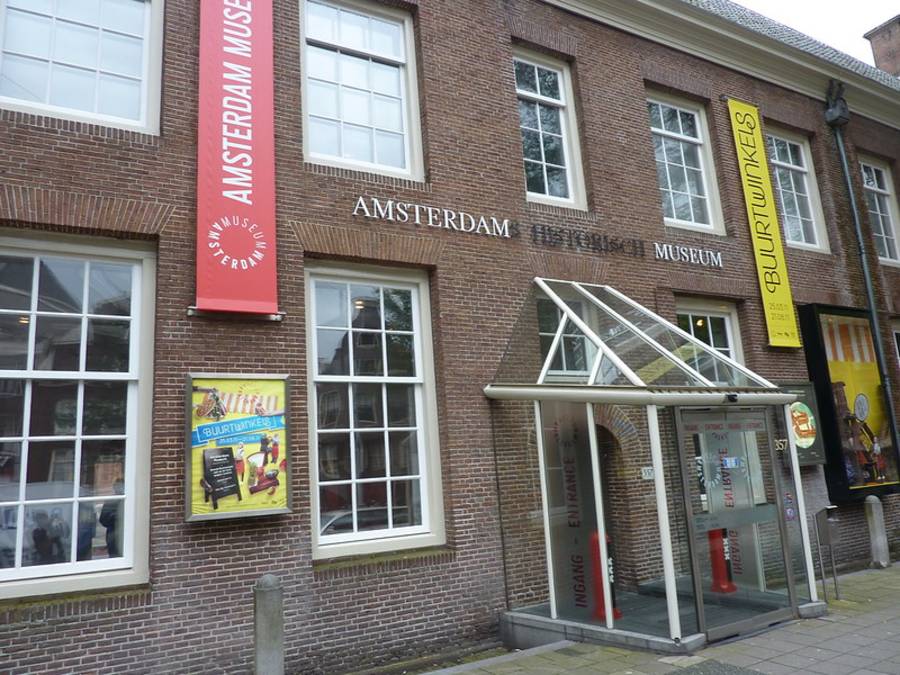Amsterdam Museum
Amsterdam Museum: A Museum on the History of the City
When we think of museums in the city of Amsterdam, the first names that come to mind are the Van Gogh Museum and the Rijksmuseum, after all, these are the most famous and the most visited by tourists who go to the city. However, another museum that is worth a visit if you have a little more time in the city is the Amsterdam Museum (also known as Amsterdam Historical Museum ) which is dedicated to the history of the city and tells, in an interactive way, the main stages Amsterdam’s history, also showing objects, videos, paintings, and other relevant items.
How to get to the Amsterdam Museum?
The Amsterdam Museum is located in the city center at Kalverstraat 92. It is very likely that you will pass in front of the museum at some point during a tour of the city center, but if you want to arrive by public transport, the easiest way is to take a tram (tram). The Amsterdam Museum can be accessed by trams 1, 2, and 5 (Spui – Nieuwezijds Voorburgwal stop) or by trams 4, 9, 14, 16 and 24 (Spui – Rokin stop). See our post showing how to use Amsterdam public transport.
Amsterdam Museum
The Amsterdam Museum is located in a historic building in the city. In the Middle Ages the place had the convent of São Luciano and since 1578 the Burgerweeshuis orphanage where hundreds of orphans lived between 1580 and 1960, where many of them lost their parents due to diseases in Europe. Currently, the Amsterdam Museum has an exhibition called Het Kleine Weeshuis (The Little Orphanage) that shows how children lived in the orphanage during this period, with some places still being original (like the patios).
Meanwhile, the Amsterdam Museum has a main exhibition that tells the history of the city, from the fishing village to the multicultural city that Amsterdam has become. This story is told in an interactive way, with several videos, sounds, images, information boards, and objects that make your experience very pleasant and make you not even see the time passing.
At the beginning of the exhibition, you get a leaflet that tells a little about the 6 main stages of the city’s history. It is possible to choose several languages, including Portuguese (Portugal) which makes the museum accessible even for those unfamiliar with other languages. In addition, the brochure has a QR Code that can be scanned in videos, audios, and interactive screens, making the interaction in your native language.
The path is linear and you go through the steps that tell more about the city’s history. At the end of the 13th century, the region was nothing more than a fishing village around the River Amstel. This village flourished until the year 1300 was granted the official city right, calling it Amsterdam (derived from Amstelredamme – dam/dam on the Amstel River). In the 14th century, the city became an important commercial center in Europe.
At this time the Netherlands still belonged to the Kingdom of Spain and it was in the 16th century that they achieved their independence from the Kingdom of Philip II from Spain in a war that lasted 80 years. From that moment on, the city began to flourish, even more, sheltering Jews persecuted in other countries and important merchants, being one of the most important commercial centers of the West. At the beginning of the 17th century, also called the Golden Century of Amsterdam, the city became one of the richest in the world, driven by its trade in colonies. It was in the Golden Century that there was a great scientific, architectural, and cultural production in the city, including with admired painters all over the world, such as Rembrandt.

History and the path continue to go through the city’s decline during the Napoleonic Wars and its new flowering after the defeat of Napoleon Bonaparte at the Battle of Waterloo in 1815. This new flowering that took place in the 19th century is also called the Second Golden Century of Amsterdam where several museums and train stations were built. The path continues through a more recent stage in history that shows the invasion of German troops in 1940 during World War II. As the city was considered a center for freedom of thought and religion, several people were captured and taken to concentration camps. The best-known story is that of the Jewish girl Anne Frank who owns a museum in the city dedicated to her story.
The last step of the way is Amsterdam that we see today, a city that shelters people of different nationalities preaches freedom of thought and expression, and is a pioneer in some social advances, even if it means breaking paradigms. This diversity can also be seen at Schuttersgalerij, which is a covered street that passes inside the museum and, in addition to its framed walls, has a carpet that is a work of art called ‘My Town: a Celebration of Diversity’ by artist Barbara Broekman representing the 179 nationalities that are present in the city of Amsterdam.
Our visit to the Amsterdam Museum was not scheduled and it was worth it because we visited a museum different from the traditional Amsterdam museum circuit. We think the price is a little steep for what the museum offers (12 Euros), but if you have purchased the I Amsterdam City Card, admission will be free and worth it as an additional program in the city.
More information
Amsterdam Museum Admission Price: 12 Euros ( free for those who have the I Amsterdam City Card )
Opening Hours: every day from 10 am to 5 pm, except on the holidays of April 27 and December 25
Amsterdam Museum website: http://www.amsterdammuseum.nl/



